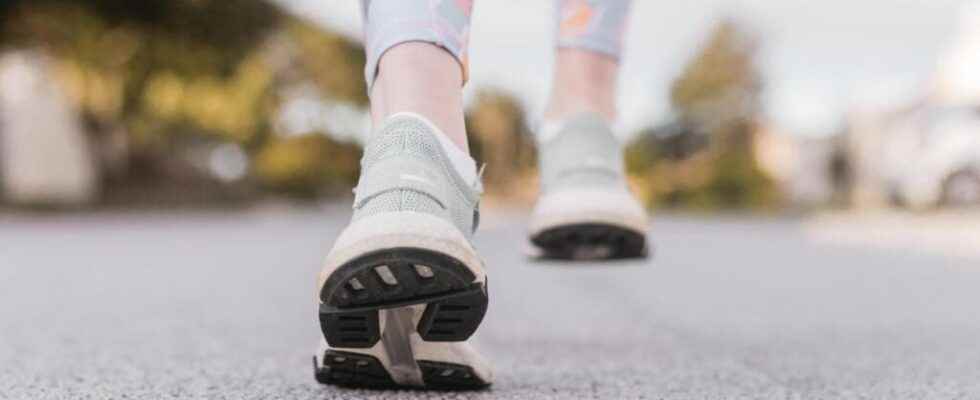Every week, Dr. Jean-Marc Sène, sports doctor, presents his sports column in Priorité Santé. Today, he distills his advice for performing a physical activity that is often recommended: walking.
Walking is a physical activity recommended in many health recommendations, but it is not always easy to be able to get started. First, what equipment do you need?
Walking requires little equipment, you just have to choose it well!
For equipment, choose comfortable shoes and have orthopedic insoles made by your podiatrist if necessary. Your shoe must have good cushioning, good grip, be waterproof. Choose clothing suitable for the weather and loose enough to avoid chafing.
Before starting a walking session, do you need to warm up?
While it is not necessary to do a warm-up session strictly speaking, it is important to wake up your body gently, starting with a low-intensity walk. Most of the time, five minutes is sufficient.
It can also be interesting to add to your warm-up session series of sheathing and muscle strengthening in order to better “carry your own body”.
Strengthen your abs with bust lifts:
- Lie on the ground and bend your legs to bring your heels closer to your buttocks. Arms outstretched or folded over the torso.
- Raise the bust towards the knees. Inhale on the descent.
- Do one set of reps, recover 30 seconds, then follow up with a second set of reps.
A sheathing exercise complementary to the work of the abdominals: the Superman:
- Lie on your stomach, arms stretched out in front of you.
- Simultaneously raise the legs and the bust by contracting the lower back: the arms and the legs must remain stretched.
- Hold the position for the recommended time.
Once you start walking, how do you know if you are walking at the right pace?
Each person is different and must walk at their own pace. A precautionary principle is essential: do not force. It is therefore preferable to rely on your feelings than on your walking speed. Moderate-intensity activity results in the following sensation: while sweating a little and being slightly out of breath, you are still able to speak. This corresponds to an index of 12 to 14 according to the Borg scale.
During exercise, focus on your overall feeling, taking into account muscle and general fatigue. Refer to Borg’s perception scale, ranging from 6 to 20, and pick the number that best matches how you feel at the moment. This number gives you a good idea of the intensity of your activity and guides you in determining whether you should speed up or slow down your pace based on the target intensity.
How long and how to walk?
It is generally recommended to walk 30 minutes five times a week, but you could also measure your steps with a pedometer. The goal to stop being sedentary is to take 10,000 steps a day. My advice is to work towards this goal gradually starting from the average number of daily steps you currently take and then gradually increasing every 3-4 weeks.
But above all it is essential to walk correctly: the roll of the foot on the ground must be complete. It goes from the support of the heel until the propulsion with the toes. A good walk consists in using the energy of the back foot to propel us forward, so the toes must be very active at the end of the unrolling of the foot. To support this impulse, but also to maintain balance, the engagement of arms and hands is essential. It is important to create a pendulum movement that will serve to maintain your balance. Another essential element: your posture. It should be straight, with shoulders open and back, and supported by a gaze that carries into the distance. The tone of the abdominal strap is also important. A trick for this: try to gently grip the ground with your toes. Quite naturally, you will feel your body change position and this tension of the feet will be transmitted to your abdomen.
Finally, remember to hydrate yourself regularly: before, during and after walking.
